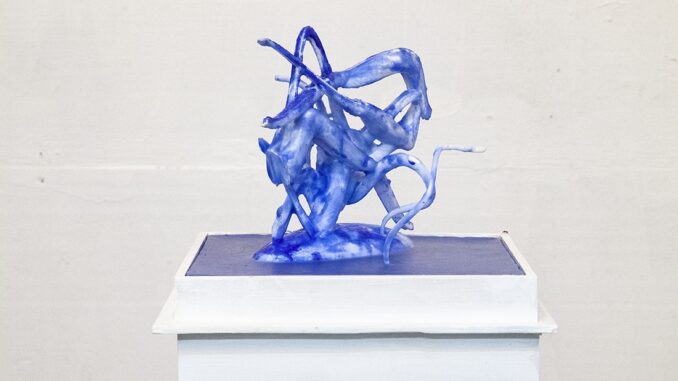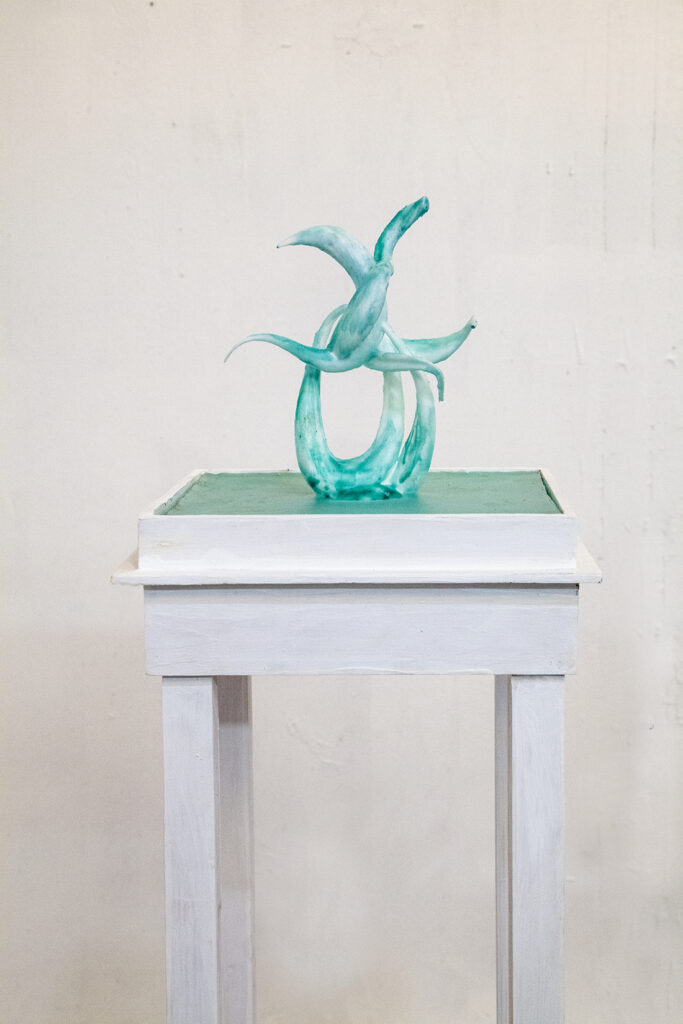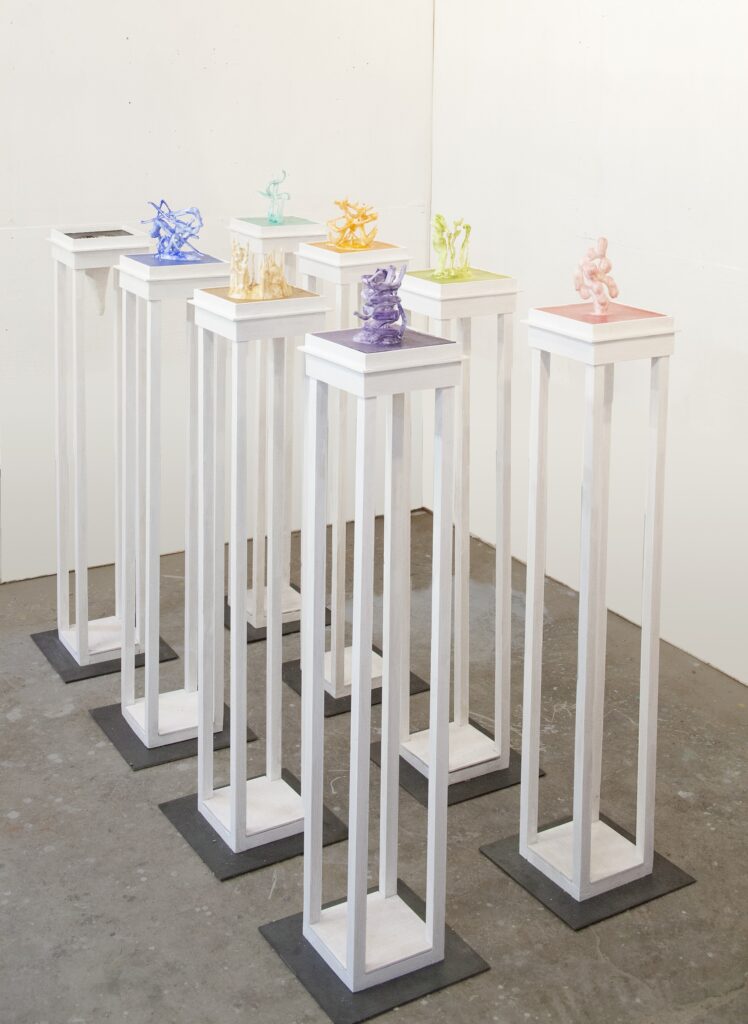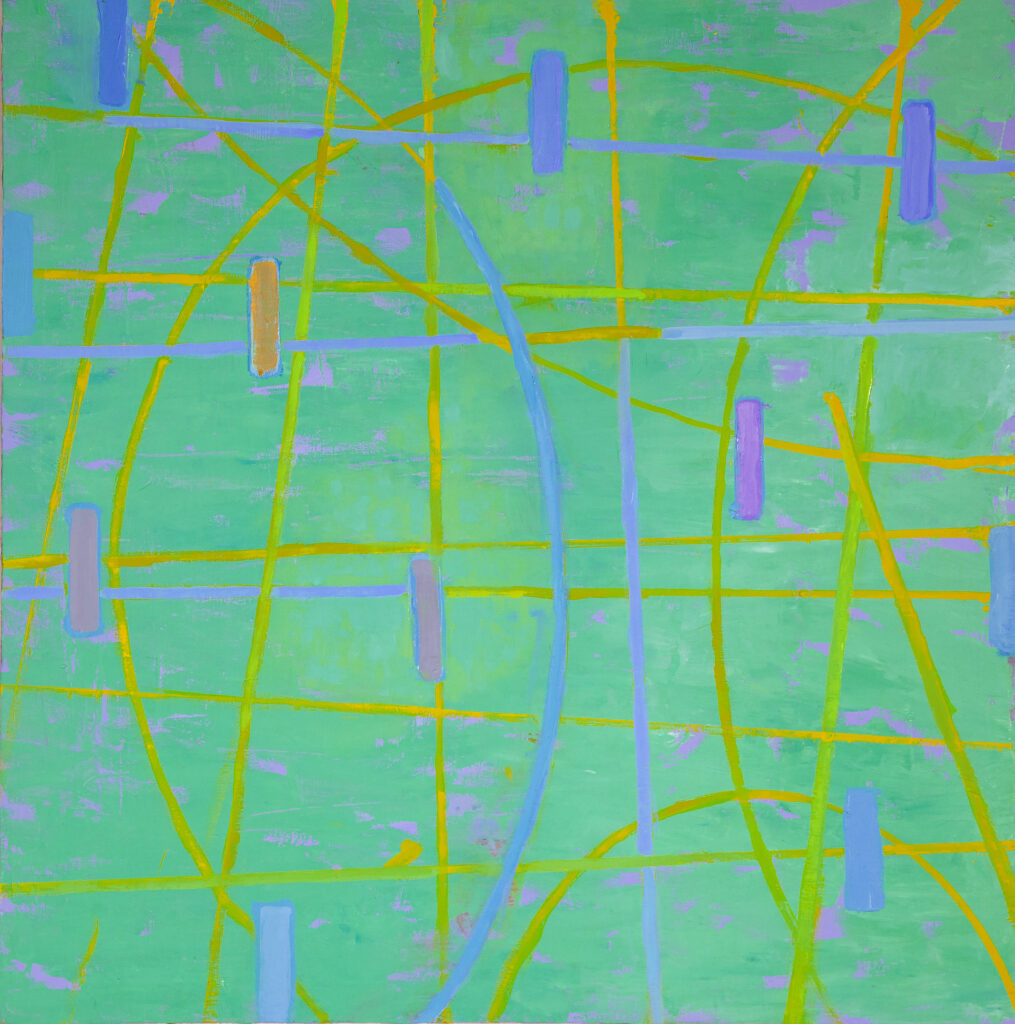
Matter matters. That is to say, the atoms, molecules and whole host of subatomic particles that make up the universe are almost too important for words. This is the stuff our very world is made of, and although we may not be able to see it, it absolutely has an impact on us. It even is us.
Catskill-based artist Jim Holl presented his own artist investigations into the world of matter with his most recent exhibition, Particle Points Collision. Specifically, the exhibition was directly inspired by the particle collisions of the Large Hadron Collider (LHC) of Geneva Switzerland. Scientists at the LHC were attempting to find the Higgs boson (among other investigations regarding elementary particles) by smashing protons together near the speed of light.
The tracings of these collisions are what inspired the paintings of Holl’s exhibition. Alongside the paintings, Holl made a series of wax sculptures that are based on a revised periodic table by physicist David Tong. The new periodic table, rather than identifying the chemical elements of the known universe, identifies the subatomic particles of the universe and their “fluid-like” fields of energy.

Holl’s interest in the realm of matter is one that arose at the turn of the millennia, starting from a personal trip and an exhibit he did based on that trip. “I took a trip after 9/11 to Joshua Tree National Park in California, got in a glider, and went over the desert floor. In this park there are these tremendous outcroppings of rock on the flat desert floor, and they’d go up hundreds of feet,” Holl said. “I was noticing while I was flying that if you look straight down you lose a sense of scale, and that inspired me to do a series called Indeterminate Landscapes.”
This twisting of scale is what led to Holl’s study of all things atomic. “That sense of scale we take as a given, and don’t take in our daily lives,” Holl said. “That notion that I worked on in terms of making paintings … led me to thinking about and this idea of finding the most elemental piece of matter. As the years went on, that led me to doing some historical research on who invented the idea of an atom.”
This launched him to study the Greek philosophy of atomism, Greek theories of aesthetics and representation and Hindu scripture on Shiva’s cosmic dance to gain a deeper insight on the history of matter. As Holl worked on his art, he has found himself walking a fine line between representing his subjects and the pure form of his compositions.

He continues to walk that line with his series of paintings for the exhibition. Holl’s oil paintings occupy the space between the prints of the particle collisions that he had been inspired by and the colorful compositions of his own making. Vibrant blue, green and gold particle paths dance across Holl’s boards. You follow them with your eyes, only to be suddenly stopped by seemingly random oblongs that had been placed in their paths. As your concentration is broken, you then start to notice the amount of detail that Holl had put into the backgrounds of the paintings, featuring abstract yet measured splashes of color. Holl’s technique is in top form with this series of paintings.
As for the sculptures, Holl had designed the base layers for them and reached out to a third party company to have them 3D printed. Molten wax was then poured on top of them. The wax coated sculptures were just as vibrant as his paintings, but much more abstract, with twisting, energetic forms that beg for closer inspection.
Holl outlines his decision to coat the sculptures in wax in his exhibition catalog. “I chose wax, molten when hot, to express the fluid-like fields of energy from which all form emerges,” Holl wrote. “The particles depicted in the periodic table all have different values, as do the sculptures illustrating these particles.” Indeed, while each sculpture has an energetic form, they all vary in composition and shape. Some sculptures twist and curl, others bubble or spike up, one even drops down into the pedestal which it rests upon.

One aspect of the artistic process that Holl emphasizes in his exhibition catalog is the importance of artistic truth over aesthetic labels of beauty or ugliness. For him, the artist’s search for self-discovery is what makes them tick. “My career as an artist has been one of self-discovery. As a youngster I was always questioning who I am, and I think every youngster questions that,” Holl said.
“As you meditate on that over the years and as you get older, you find as an artist that the cause that is causing you to make art of any kind, is of self-discovery. What that is to be honest with oneself, and that is where the truth part comes in. And when you begin to self-realize yourself, you identify with the artwork.”
Holl further explains what this artistic truth means to him. “As a young artist I used to throw my brushes at the painting and I didn’t know if they were any good, and I didn’t know why I was doing it or what they were supposed to be. It comes with the realization and settling in to oneself,” Holl said.
“That is what I mean by truth, and in terms of art, that’s what the truth is. It’s being able to express yourself and be comfortable with that mirror of this painting that is before you. That this indeed is the essence of your character.”

Perhaps this exhibition is an exercise in the discovery of the truth, both as an artist and of the nature of the universe. These subatomic particles make up the very fabric of our reality, and are in a way the very truth at the core of everything. Holl’s artwork reaches at the truth of the self, and comes from the core of his own being.
Particle Point Collisions was hosted at The Lockwood Gallery in Kingston and ran until Nov. 3. As pandemic restrictions begin to ease, Holl aims to tour the exhibition, and hopes to have it hosted at SUNY New Paltz’s very own Samuel Dorsky Museum of Art.
